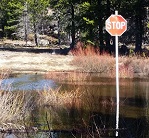|
Brick Dust Otis posted:Because it looks dope as poo poo? That and maaaaybe also they left them open to deal with what would be seriously cold for Australia? Junee / Goulburn would be -5C to -6C on that weekend in the morning so ... dunno?
|
|
|
|

|
| # ? May 9, 2024 21:23 |
|
Ryand-Smith posted:So for crap American trains which sounds better, the shitshow that was the Metroliner a series of failed EMUs that could not run 125mph, or the E60, the beast that was supposed to bring about a new age of high speed rail that ended up hauling coal and commuters. Another good option: the Boeing "US Standard" LRV is a pretty good crap american train story with very american undertones.
|
|
|
|
 The line's partially flooded, should we stop? Which part is flooded? Oh, just the inside part.
|
|
|
|
I suspect that services on this line are not frequent. https://www.youtube.com/watch?v=TerZeM-Uw4w Gets really crazy about 50 seconds in.
|
|
|
|
Wow. They built an aqueduct that a train can also run on? The Romans would be jealous. Edit: ding ding ding http://tramsimulator.com.au/  (Note: No points/junction in this location) drunkill fucked around with this message at 09:00 on May 14, 2016 |
|
|
|
As I understand it the main reason why the HST (I'm actually posting from a GWR HST, on Brunel's main line to Bristol) is such a rare success amongst BR trains is that it was a 'Plan B' to the Advanced Passenger Train. The APT was sexily fast and high tech and so attracted all the usual political interference from both within BR and outside it - constantly changing parameters, trying to do too much with too little, rushed development time, people defending their own little fiefdoms and government pressure to give the media good stories. The HST was, if I remember correctly, viewed as low-tech, low-prestige and far too conventional and unambitious so it got almost no interest from anyone within BR or elsewhere. Which meant the designers could actually so their job and take their time. When the APT was, inevitably, canned the HST was ready to take over and it actually worked.
|
|
|
|
drunkill posted:Wow. They built an aqueduct that a train can also run on? The Romans would be jealous. Wait, isn't that Collin's Street? That's one long straight run of track!
|
|
|
|
BalloonFish posted:As I understand it the main reason why the HST (I'm actually posting from a GWR HST, on Brunel's main line to Bristol) is such a rare success amongst BR trains is that it was a 'Plan B' to the Advanced Passenger Train. The APT was sexily fast and high tech and so attracted all the usual political interference from both within BR and outside it - constantly changing parameters, trying to do too much with too little, rushed development time, people defending their own little fiefdoms and government pressure to give the media good stories. NSW got a bunch of HST knockoffs (The XPT) they are slightly shorter, started out with detuned Paxman Valenta, converted to Paxman VP185's. They also been downgeared to have a service speed of 160kph, max 190kph, also modded ot deal ith shittier rail and hotter, dustier conditions - also likewise, they have been very successful trains. They now run all the Interstate passenger services on the east coast. Also like the HST's only now been talked about to be replaced. By the time they are replaced, they will be over 40 years old and still being about the best trains in hte fleet.
|
|
|
|
BalloonFish posted:As I understand it the main reason why the HST (I'm actually posting from a GWR HST, on Brunel's main line to Bristol) is such a rare success amongst BR trains is that it was a 'Plan B' to the Advanced Passenger Train. The APT was sexily fast and high tech and so attracted all the usual political interference from both within BR and outside it - constantly changing parameters, trying to do too much with too little, rushed development time, people defending their own little fiefdoms and government pressure to give the media good stories. Basically, this. The APT project acted as a meatshield for the HST, absorbing all the publicity, political/managerial meddling and feature creep. It let the engineers working on the HST work unmolested, and create something that the UK railway network and its passengers really wanted and needed. It wasn't all that ambitious technically - most of its systems were conventional, but engineered well and put together in such a way that they worked together to make the HST very good at what it did. It only had the features that it needed to do what it did, rather than acting as a glamorous testbed or technology demonstrator. They took a lot of inspiration from the Japanese Shinkansen, which was not actually very technologically advanced - it just had a lot of power, streamlining, and a new carriage design to reduce weight and be comfortable. The APT ... I've done a writeup on it before. People in the UK are still arguing about whether it could have been a success and the reasons for its failure. It certainly had a lot of problems - technical problems, political problems, image problems, project management problems. Arguably it could have worked if they threw enough time and money at it, but so could anything, and you have to try to avoid the sunk cost fallacy at some point. Would the billions of pounds and years of work required to make the APT work had been better spent elsewhere (such as on the HST)? Eventually it was decided that it wasn't worth the money any more. Can you justify spending that much more money on a defective luxury express train when you can't even afford to maintain the track properly?
|
|
|
|
Connex certainly thought so in Australia when they bought those shiny toy-stuffed X'Trapolises and let the entire Melbourne train network go to poo poo. They even sabotaged themselves by cost-cutting with rail joints that weren't designed for extreme heat. The kind experienced on a daily basis in an Australian Summer.
|
|
|
|
drunkill posted:
 Sorry, couldn't resist.
|
|
|
|
Neddy Seagoon posted:Wait, isn't that Collin's Street? That's one long straight run of track! There are several points trams can change sides for when one reaches the end of its line and starts back in the other direction. But I didn't think there were any in front of Virgin Active. EDIT - just used google street view and, no, there aren't. Now I'm
|
|
|
|
Bourke Street between Russel and Exhibition streets and there is a crossover but it is a bit up the road, could have changed tracks halfway across and slid about ~45 metres to a rest if it was heading West. Streetview: https://www.google.com.au/maps/@-37...!8i6656!6m1!1e1
|
|
|
|
The NTSB apparently released information on the Amtrak crash in Philadelphia, and it seems like they're blaming distraction as the prime cause. Is it really possible to get so distracted for so long that you forget that you're in an accelerating train. A few seconds I can see, but entire minutes? Bonus: NTSB Press release as of 5/16/2016: NTSB to Meet on Amtrak 188 Derailment Accident 5/11/2016 WASHINGTON - The National Transportation Safety Board will determine the probable cause of the May 2015 fatal Amtrak derailment in Philadelphia during a board meeting scheduled for May 17, 2016. The National Transportation Safety Board will determine the probable cause of the May 2015 fatal Amtrak derailment in Philadelphia during a board meeting scheduled for May 17, 2016. The National Transportation Safety Board will determine the probable cause of the May 2015 fatal Amtrak derailment in Philadelphia during a board meeting scheduled for May 17, 2016. The National Transportation Safety Board will determine the probable cause of the May 2015 fatal Amtrak derailment in Philadelphia during a board meeting scheduled for May 17, 2016. The National Transportation Safety Board will determine the probable cause of the May 2015 fatal Amtrak derailment in Philadelphia during a board meeting scheduled for May 17, 2016. The National Transportation Safety Board will determine the probable cause of the May 2015 fatal Amtrak derailment in Philadelphia during a board meeting scheduled for May 17, 2016. The National Transportation Safety Board will determine the probable cause of the May 2015 fatal Amtrak derailment in Philadelphia during a board meeting scheduled for May 17, 2016. The National Transportation Safety Board will determine the probable cause of the May 2015 fatal Amtrak derailment in Philadelphia during a board meeting scheduled for May 17, 2016. On May 12, 2015, at 9:21 pm ET, northbound Amtrak passenger train no. 188 derailed in Philadelphia, Pennsylvania, after entering a curve at 106 mph where the speed is restricted to 50 mph. The locomotive and all seven passenger cars derailed. Eight passengers were killed and more than 200 others were transported to area hospitals. Event: Board Meeting Date/Time: Tuesday, May 17, 2016, 9:30 a.m. ET Location: NTSB Board Room and Conference Center Address: 429 L’Enfant Plaza SW, Washington, DC Participants: NTSB Board members
|
|
|
|
Pigsfeet on Rye posted:The NTSB apparently released information on the Amtrak crash in Philadelphia, and it seems like they're blaming distraction as the prime cause. Is it really possible to get so distracted for so long that you forget that you're in an accelerating train. A few seconds I can see, but entire minutes? https://www.google.com/url?hl=en&q=http://www.cnn.com/2016/05/16/politics/amtrak-188-derailment-engineer-distracted/index.html
|
|
|
|
More Melbourne tram shenanigans: 'Tram derails, veers into Melbourne house after collision with car ' http://www.abc.net.au/news/2016-05-17/melbourne-tram-derails-hits-house-after-car-crash-in-kew/7419966 
|
|
|
|
drunkill posted:More Melbourne tram shenanigans: You REALLY gotta try to make a Bombardier tram bounce off the tracks like that. 
|
|
|
|
The Settle and Carlisle Line - British Rail tries to eat itself. Poor British Rail. Hated by the government, its passengers, the general public, and loved only by hacky 80's stand-ups as a source of cheap material alongside other endearingly crap British institutions like the Reliant Robin and Butlins holiday camps. Everyone had it in for BR and it seemed the world was out to destroy it. However, on more than one occasion, it seemed that British Rail was its own worst enemy. The saga of the Settle and Carlisle line in the 1980's was one of BR's most baffling attempts at self-destruction. This is the Settle and Carlisle line. Pretty, isn't it?  Couldn't even think of a sarcastic caption. Just look at it. As with many of the best Victorian railway routes, the S&C was built to some extent out of bricks, mortar and stone, but mostly out of spite. The London and North Western Railway were the first to complete a line from London to Scotland, their route running from Preston to Lancaster and Carlisle, and onwards to Lockerbie and Glasgow. This is now the West Coast Main Line and the main arterial route between the West of Scotland and most of the rest of the UK. The Midland Railway also wanted to afford their passengers access to Scotland from their London terminal at St. Pancras, as well as direct services from Leeds to Glasgow, which were not possible at the time. The Government ordered the LNWR to permit through-ticketing via a changeover at Ingleton, a small Cumbrian village on the side of a steep hill, much to the LNWR's annoyance. The LNWR wouldn't let the MR's trains call at its Ingleton station and The government intervened again and forced the construction of a proper junction at Ingleton where the MR's trains could call, and forced the LNWR to attach its rival's coaches to its trains there. Churlishly, the LNWR responded by attaching the MR's passengers to heavy freight trains, and sometimes "forgetting" about them in sidings for hours on end, whilst the LNWR's managers twirled their impressive Victorian moustaches and cackled into their sherry.  "Mwuhahahahaha!!" By 1865 the MR had lost patience with the LNWR's bullshit and decided to build their own line to Scotland. The proposed route was difficult, steeply graded and with few settlements or industries, but such was the grip of "Railway Mania" that they had no problem getting both finance and parliamentary approval for the project, the latter subject to a provision that the MR would allow other companies proper access to the tracks to avoid a repeat of the Ingleton fiasco. Sadly, a banking crisis hit in 1866 and interest rates shot up. The route from the Yorkshire town of Settle, through over 70 miles of near-mountainous terrain in the Yorkshire Dales and Pennine hills, suddenly looked ruinous. In 1869, The MR, having petitioned parliament just four years earlier to be allowed to build the line, petitioned parliament to not have to build the line instead. Parliament, egged on by the other railway companies who had been promised free access (and also presumably by the LNWR who were by now laughing so hard a little bit of wee was coming out), refused, and ordered them to build what was starting to look alarmingly like a white elephant. The line was a brutal marvel of engineering, with massive cuttings and huge viaducts and tunnels to keep the line to express standards, minimising curves and gradients despite the hilly terrain. Architectural highlights included the Ribblehead Viaduct, 400m long and 32m high and the 2.4Km long Blea Moor tunnel. The line included the higest point in the UK railway network at Ais Gill. The punishing work and freezing conditions claimed 25 lives during 6 years of construction. The line went 50% over budget and cost £3.6m - in 1875 money. Despite this Herculean effort, the S&C was longer and steeper than its LNWR rival, and journey times were significantly longer. For a while the MR was able to compete on luxury, but when the LNWR and MR were merged into the new LMS conglomerate in 1923, it was soon clear that it was the inferior route, and the new company realised that it could run its luxury trains via the faster Lancaster route instead, making the S&C a secondary line at best. It served few settlements and was expensive to maintain, and its only real use was to keep slow freight trains away from the faster line.  I'm sure the coal wagons really admired the view From 1948 the route passed to British Rail, and it was then that the neglect really started. The 1963 Beeching Report recommended that the line be closed to passenger services, and by the 1970's it was a common understanding that the line was to be got rid of altogether. Despite the route via Lancaster becoming increasingly congested (between Lancaster and Carlisle it was only double-tracked, forcing careful timings of slow and fast trains to avoid traffic jams), it became more and more clear that BR wanted rid of the S&C. The neglect contributed to several accidents, with BR not bothering to upgrade the line's safety equipment and standards. In 1970, all but two of the line's passenger stations were closed. Through trains from London ceased in 1975 and by 1976 there were just three trains per day in each direction. In 1984, BR formally issued a closure notice for the line. The result was complete mayhem.  "If we make the writing really small then I'm sure nobody will bother to read all that." Local residents began looking at the business case for the line's closure and noticed that things were ... amiss. The publicly claimed cost for the repairs needed to the Ribblehead viaduct had been inflated by £6 million compared to BR's own leaked internal documents - a simple, flat out lie. It also emerged that BR had deliberately moved traffic onto the overcrowded WCML via Lancaster, causing delays and congestion, just to make the S&C look more useless than it actually was. There was even evidence that BR had tried to "smear" the anti-closure campaign by feeding journalists false stories about its members. In the face of a massive public campaign, and in the face of the clear evidence of its own lies and manipulation, BR tried to press ahead anyway, despite passenger numbers rising 450% between 1983 and 1989. In 1988, BR announced (via a poster campaign of all things) that it was going to sell the S&C, despite needing the government's consent to do so, which it hadn't actually bothered to seek. A formality though, surely? After all, this was Margaret Thatcher's government, scourge of BR and hater of all things railway. They reckoned without the newly-appointed Transport Minister, and notorious railway geek, Michael Portillo, who was very much a fan of nice scenic railways (he has now given up politics in favour of presenting documentaries about trains), and also very much a fan of the marginal Conservative constituencies the line passed through. Portillo told BR, in no uncertain terms, to go gently caress themselves.  "Chuff off" In the face of the ridiculous spectacle of British Rail begging an anti-railway government to close bits of itself and the government refusing to do so, BR was forced to keep the S&C open. Nowadays, many of the stations on the route have re-opened. Most importantly, the S&C is now a vital freight route. Large flows of coal and gypsum now cross the border in response to changes (largely wrought by Thatcher) in how the UK's power is generated, and travel across the S&C rather than clog up the twin-track WCML between Lancaster and Carlisle. The line is also a vital reserve for when either of the two electified lines to Scotland are closed for maintenance. It's also popular with ramblers and tourists who want to experience its breathtaking scenery. How many more of the now-closed railways of the UK could have been saved if a bit more attention had been paid to the business cases for shutting them down? How had British Rail ended up with such a severe case of body dysmorphic disorder that it was begging the government to hack off its limbs, even pretending they were gangrenous when they weren't? How did a gay Spanish rail enthusiast end up as transport minister in a Tory government? These, along with the appeal of Transvision Vamp and the career of Timmy Mallet, will remain amongst the greatest British mysteries of the 1980s.   It's a good thing BR didn't do anything else embarrassing back then
|
|
|
|
Axeman Jim posted:along with the appeal of Transvision Vamp Wendy James was at the time very fuckable. No mystery there mate!
|
|
|
|
Axeman Jim posted:
Awesome effortpost, as usual. Best part is that train is called the "Problem".
|
|
|
|
Axeman Jim posted:How many more of the now-closed railways of the UK could have been saved if a bit more attention had been paid to the business cases for shutting them down? Strange timing, Axeman Jim, because today I came across the remains of something that raises that exact question about another late-Victorian railway folly that I thought this thread might enjoy: The Great Central Railway, London Extension 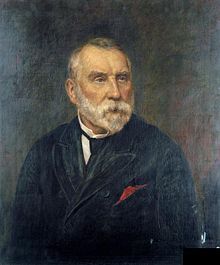 This man is Sir Edward William Watkin, 1st Baronet Watkin of Rose Hill, 1819-1901. His is usually described in history books as 'a visionary'. Notice that having visions is not the same as actually achieving anything tangible. Brunel, Stephenson, Bouch and Peto are all known as great railway engineers. Watkin is known as a visionary. In fairness he wasn't an engineer- he was an industrialist, businessmen and a politician born to a wealthy family of Manchester cotton mill owners, although his personal interest was in railways. By the 1860s he was a director for several major companies at once, including the Great Western, the Great Eastern, the East London and the Cheshire Lines Committee. By the 1880s he was simultaneously chairman of the South Eastern Railway, the Metropolitan Railway and, most importantly, the Manchester, Sheffield & Lincolnshire Railway. The MS&LR was Watkin's real interest as it was based around his home town, carried his mills' cotton from Liverpool to Manchester and the finished textiles back the other way. The network also crossed the Pennines, via the fearsomely steep Woodhead route, including the infamous three-mile Woodhead Tunnel, to the 'steel city', Sheffield, the other major textile towns of Leeds/Bradford and the east coast ports. Stretching from coast to coast across the industrial heartland of the north of England, the MS&LR was a compact, busy and comfortably affluent little railway. But Watkin had a Big Idea, and he was also tired of handing over lucrative freight traffic to the big London-centric railways, especially the Midland and the Great Northern, which earnt most of their revenue hauling coal and manufactured goods from the north into the capital. The MS&LR went nowhere near London, running almost entirely east/west and only getting as far south as the Nottingham coal fields, 150 miles from London. And if the MS&LR was going to go to London, why stop there? Watkin already controlled the Metropolitan, which he was pushing ever further out into the suburbs and countryside northwest of London and lucratively developing swathes of housing that was now only a quick train ride from The City. And the South Eastern controlled the route from London to Dover - 23 miles from Dover was France, seperated only by a troublesome ditch of water called the English Channel. It was all so logical - the MS&LR would build a railway to London, the Met would build a railway under London and the South Eastern would build a tunnel under the Channel. Then the industrial cities of the north would be directly connected to the markets of Europe and Watkin's companies would, surely, get the lion's share of the lucractive London-Paris express trains since they could do away with the slow, uncomfortable and sick-making ship crossing halfway along. The Channel Tunnel project actually began in earnest in 1880 with a full survey and geological samplings taken (which would later be reused when *the* Channel Tunnel would be built in the 1980s) and trial borings were made on both sides. A new mechanical tunnelling machine drove a 7ft tunnel for over a mile under the sea out from the White Cliffs of Dover during 1881/82 and Watkin, skilled PR man that he was, hosted swanky champagne dinners in the tunnel with a star-studded guest list. Unfortunately the tunnel project ran into serious political problems - the British establishment couldn't face the thought of being physically connected to France by rail and this was still a time of the 'Entente very-un-cordiale', when scares of a war with France ran strong. Parliament refused to grant permission for Watkin to commence work on the tunnel proper and the project was stopped. But Watkin pressed on with his Big Idea. The Metropolitan continued to push out of London, reaching a lonely rural spot in Buckinghamshire called Verney Junction in 1891, 50 miles from central London and 90 miles from Nottingham. Now Watkin had to 'bridge the gap' and submitted a plan for a brand new 90-mile main line to be built by the MS&LR between Nottingham and Verney Junction, with a line spearing off the Met just before it went underground at Regent's Park and ending in a brand new 8-platform terminus in the heart of west London at Marylebone (pronounced 'Marlybun' or, it seems, 'M'bn' if you're a true native Londoner). Watkin had more problems here with the Establishment, as originally the approach lines to Marylebone would have required demolishing Lord's Ground, home to the very pukka Marylebone Cricket Club and that just wouldn't be...well, cricket. The compromise was to put the railway in a tunnel skirting the MCC's property - which merely required the demolition of a large orphanage instead. With everyone (except the orphans) satisfied, Parliament granted the MS&LR its London Extension Act in 1893 and construction began in 1894. The London Extension was the last main line built in the UK (until the development of the High Speed network in the 21st century, at least) and it was built at the peak of Victorian steam-age engineering. It was also one the longest railways in the country to be planned and built in a single go and was, in every sense, on a different scale to every other main line in Britain. There were already three other main lines between London and the north (L&NWR, Midland and Great Northern) and virtually every significant town or city along the way was already served by all three. And the London Extension was supposed to serve as a direct connection to London from Manchester and Sheffield so the design took the (entirely reasonable) attitude of 'gently caress the Midlands' and went straight through. Only Leicester, Rugby and Nottingham were directly served by intermediate stations and the largest town which had no pre-existing railway connection was the market town of Lutterworth (pop. 2200). In keeping with the 'get through the Midlands as quickly as possible' ethos the Extension was laid out with wide curves and gentle gradients (no greater than 0.78% and usually around 0.4%). And Watkin hadn't given up on his cross-Channel dream, either: every bridge and tunnel on the Extension was sized 'Xtra Large' to accomodate Europe-sized wagons and the stations were a distinct island platform design so the tracks could be relaid to fit a wider loading gauge without having to be rebuilt. 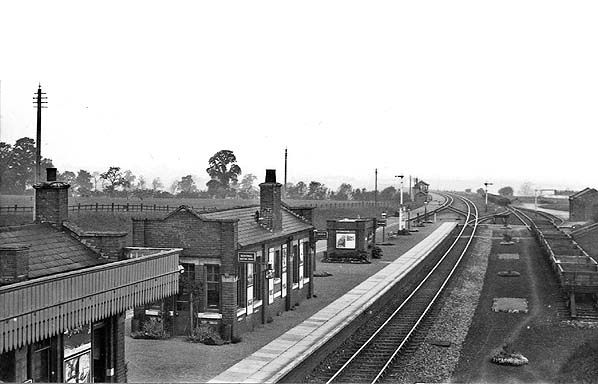 Nothing was done by halves - the quality of the architecture and engineering on the London Extension was first rate in every aspect. The larger stations were built in a uniform Queen Anne Revival style with terracotta details. Being a latecomer when the railway did pass through a city it was no longer possible to simply blast away anyone unfortunately poor enough to be in the way - at Leicester the Extension crossed over the city centre on a viaduct over 1.5 miles long consisting of hundreds of brick arches and some massive steel bowstring bridges. At the new Leicester Central station the constructors uncovered a Roman mosaic. Classical archaeology being more important than London orphans, the mosaic was left in situ with the platform incorporating a tile-lined vault with a glass floor in the platform so travellers could see it. 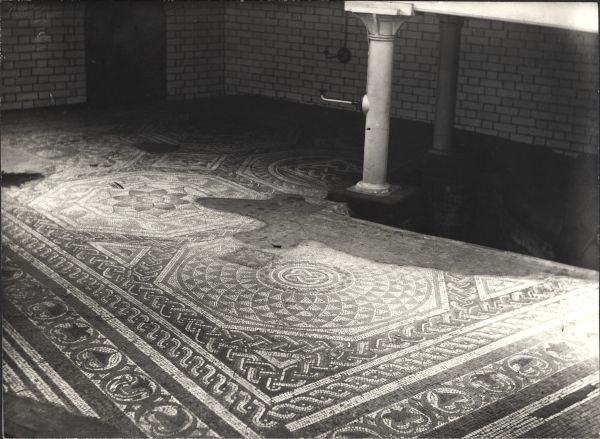 At Nottingham the railway went under the city rather than over it, using two huge tunnels either side of a massive 13-acre hole dug in the centre of town, which was then filled with a brand new 12-road station some 250 feet wide and with platforms 1200 feet long. And that platform length was used for rural stations in the middle of nowhere too (and most stations on the London Extension were rural ones in the middle of nowhere...). Catesby Tunnel (built on the insistence of the landowner who didn't want a railway spoiling his view) was 1.7 miles long and 27 feet wide. By British standards the London Extension was, in every way, a HUGE railway. 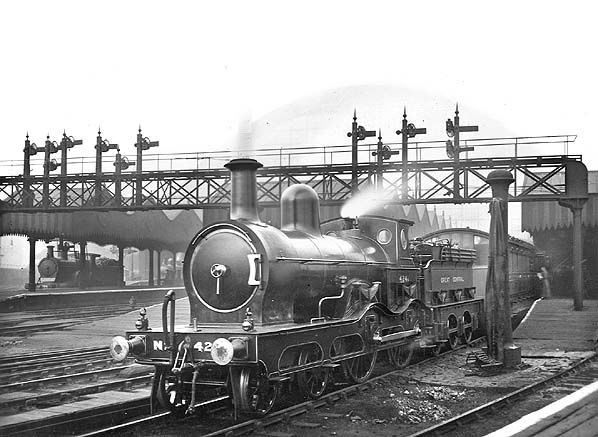 In keeping with this new grandeur and, it was hoped, its new place amongst the premier league of Britain's railway companies, in 1897 the MS&LR changed its name, becoming the Great Central Railway. It was also a very expensive railway - the original estimate cost was (in 1893 money) £3.1 million but it ended up costing £11.5 million or the equivalent of £1.3 billion (£14 million per mile). This meant that the GCR started its life with a huge debt burden. It was because of the crippling cost of building the London Extension (already becoming better known as the Great Central Main Line) that the Marylebone terminus remained half-built with a full-width Queen Anne Revival office frontage but only four platforms, giving it a strange L-shape plan that it has to this day.  While the London Extension was being built Watkin was working on another Grand Vision - to build an amusement park on some empty heathland that the Metropolitan Railway owned as it passed through Wembley. This would attract thousands of people every day, all of whom would have to travel to and fro on the Met. The centrepiece of Wembley Park would be a Bigger, Better and British version of the Eiffel Tower. It was going to be 1170 feet tall. The first stage was built, up to 150 feet, and opened in 1894. But it immediately began to subside and Wembley Park, with or without its tower, wasn't the big hit Watkin hoped for. The London Extension was taking up all his time and, as it turned out, the last of his health. He died in 1901, just after the GCR Main Line fully opened. His tower, now nicknamed the London Stump, was demolished in 1907. With Watkin gone no one else was around to seriously propose and organise a Channel Tunnel project so the idea went on hold for the next 50 years. 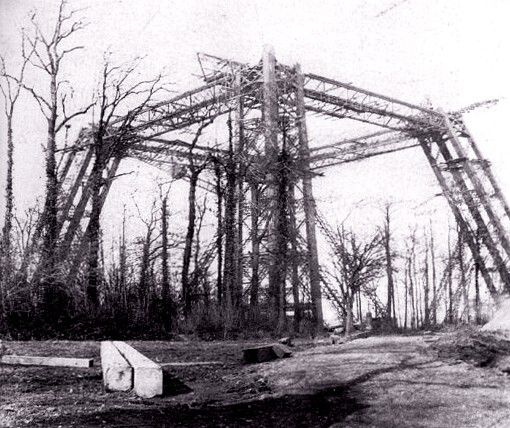 And what of the London Extension? Without the Tunnel it became a beautifully-built main line railway with absolutely no purpose as it threaded its way under, over, and around all the existing railways in central England, wilfully avoiding anywhere with a population or any real industry in the name of getting to Sheffield as quickly as possible. From Day One the GCR was laden with huge debts that swamped any profits from the rest of the old MS&LR network. Building a huge new docks complex on the east coast at Immingham and a big new coal yard at Wath were both individual successes but the London Extension remained an albatross around the GCR's neck. It had its uses - Nottinghamshire coal could now go direct to London and the south, as could fresh fish from Grimsby, but that was about it. Despite the high-speed nature of the line, and some very fine locomotives designed by John Robinson in the 1900s, the GCR was simply a less convenient route to most of the places people wanted to go from London, requiring either a change of trains at Leicester or Rugby or a seat in a through carriage with some awkward waits as it was shunted from one train to the next. The GCR made luxury and modernity its selling point, investing in some superb rolling stock but it couldn't get around the fact that its magnificent main line was simply rather pointless. In 1924 the GCR was merged with the Great Northern, Great Eastern, North Eastern, North British and a few others to create the London & North Eastern Railway. The LNER already had the old GNR/NER East Coast Main Line from London to Edinburgh and found the old GCR route of little strategic use. The LNER also inherited the GCR's debts, ensuring that it would be perpetually on the brink of bankruptcy and the most financially fragile of the 'Big Four' companies. The GC Main Line itself was maintained in its old, redundant ways and was home to some very fast express passenger and freight services, plus some of the heaviest coal trains on British rails, but actual profits remained elusive. Its main purpose was to accomodate diverted East Coast trains when that route was shut for some reason. When BR was created it found itself in possession of four north/south trunk routes, two of which went all the way to Scotland and two of which went up the middle and stopped somewhere in the north. The GC Main Line was originally managed, along with the rest of the former LNER, in the BR Eastern Region and things stayed pretty much the same as they had been since 1900. But in 1958 the regions were reorganised and the GCML fell into the hands of the London Midland Region, formerly the LNER's rival London Midland & Scottish and successor to the GCR's bitter rival, the Midland Railway. It was the old Midland Main Line that the GCML most closely duplicated and, predictably, it was the MML that received preferrential treatment despite the GCML's superior engineering and untapped potential (despite being designed and built for easy upgrading to quad-track the GCML remained almost entirely a simple twin-track route). In 1960 direct expresses from London to Manchester and Sheffield were withdrawn, leaving Nottingham the furthest point of call for London-origin trains. In 1963 the local service timetable was drastically cut back and many of the intermediate stations were shut. Then Dr. Beeching set his teeth into the line, seeing it (quite accurately) as a pointless duplicate and one which was now, due to the service cuts, massively under-used. The northern and southern ends (Sheffield-Nottingham and Rugby-Aylesbury) were shut in 1966, leaving a strange isolated stub between Nottingham and Rugby, on which some decrepit diesel railcars shuttled back and forth until 1969 when the GCML shut for good, save for the southernmost section serving the London commuter belt between Marylebone and Aylesbury. The remaining section often didn't even get the courtesy of an honourable demolition - once the tracks were lifted the rest of the infratstructure was just left rotting away and being reclaimed by nature. Some of the once-grand stations were left derelict well into the 1980s, by which time they had become hazards and only then were demolished. But has the London Extension's time finally come? With a lack of joined-up thinking so typical of all British infrastructure decisions of the 20th century, in 1964 (as the GCML was being run down and its final closure was being planned) Britain and France signed an agreement to build a Channel Tunnel. In 2009, with the East and West Coast Main Lines bursting at seams and the entire network is in desperate need of more capacity, the High Speed 2 project was formally started with the aim of linking the Channel Tunnel (opened in 1994) to the north of England via HS1 - a high speed Dover to London main line which then tunnels under London. Sound familiar? Routing HS2 is a controversial matter but what if there was a pre-existing railway line that deliberately avoided major population centres while heading straight for the conurbations of the north on a route that was entirely free of both major gradients and sharp curves, built to a generous loading gauge and with a terminus in the middle of London? Unfortunately in the intervening decades has made resurrecting the London Extension in its entireity impossible. Not only are two sections now being very happily used by heritage railways but another section is under part of the M1 motorway and a number of large and very expensive viaducts have been demolished. Other sections of the trackbed have been built on and the crucial sections through Leicester and Nottingham have all been repurposed to such an extent that reopening isn't financially or politically viable any more - a shopping centre now sits where Nottingham's grand Victoria station once was. As currently proposed High Speed 2 will use about 11 miles of former GCML trackbed north of Aylesbury but will then head northwest to Birmingham rather than heading straight up the middle of England to Nottingham. So all those bridges, viaducts, cuttings, island platforms and extra-wide tunnels in the countryside will keep looking as they did today when I stumbled across them. That station I posted a picture of earlier? It now looks like this: 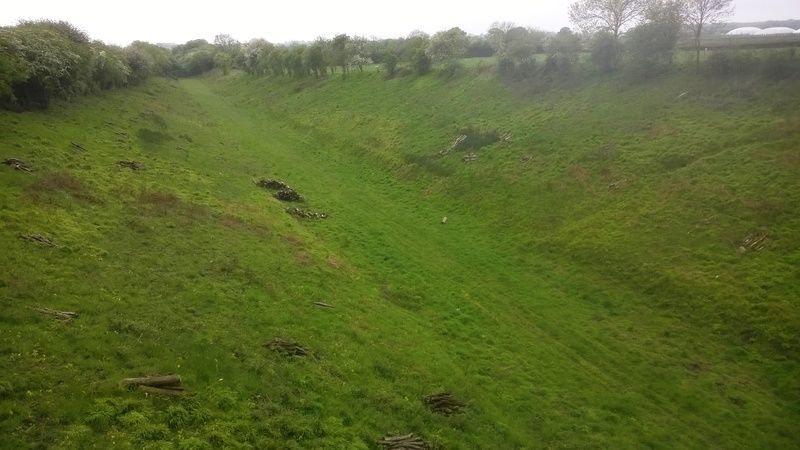
|
|
|
|
I got to see this (Great Northern P-2 4-8-2) the other day on my way home from another thing I was doing, it's in a small town called Wishram, Washington. Not my picture. My camera couldn't comprehend the sheer size of it. http://www.steamlocomotive.info/F102003.cfm has the story of how it got where it is. I also saw a 1970's era caboose in a park, not as exciting.
|
|
|
|
I got stuck doing a trip from Dallas, Texas, to Shreveport, Louisiana, and back last week for work. On the way back, I stopped in Marshall, TX, and found the historic Texas & Pacific depot which is still used by Amtrak and houses a pretty good museum on the history of the Texas and Pacific Railroad in Marshall. Apparently they used to have a huge maintenance and rebuild shop there. Anyway, this was outside: What's curious about this locomotive is that it was originally built for the Fort Worth and Denver Railroad, who copied many locomotive types from the Chicago, Burlington and Quincy Railroad. This specific type is more frequently known by CB&Q fans as an O1a type, the most prominent example of which is CB&Q 4960 - now Grand Canyon Railway 4960. I used to work for Grand Canyon Railway and spent a lot of time on and around 4960 so I got this weird sense of deja vu when I rolled up and saw this. The aesthetics are different - especially since GCRY rebuilt 4960 to the appearance of choice of then CMO Robert Franzen - but mechanically, it's the same. I was able to get in the cab and so much of it just felt familiar. I opened up my imgur account for the first time in ages to share that and found a few more things worthy of sharing. First, here's a shot I took of an eastbound BNSF train east of Flagstaff, Arizona. The San Francisco Peaks are in the background.  Shenanigans at Grand Canyon Railway: I got stuck in the cab of a work train while stuck in a siding by myself for several hours. Inspiration struck.  Last but not least, my favorite. I used to run vintage streetcars in public transit. Advertisement space was sold inside the cars, but the spaces not sold were filled with reproduction vintage ads bought in bulk and apparently put up without anyone actually looking at them. This ad stayed up for close to three months before somebody *in the public* finally noticed. I don't work there anymore, partially because of the attitude that poo poo like that is okay. EDIT: I brought this up to management right after it was put up and it was ignored. It took about three months for a rider to notice. 
Tex Avery fucked around with this message at 04:32 on May 24, 2016 |
|
|
|
Tex Avery posted:Last but not least, my favorite. I used to run vintage streetcars in public transit. Advertisement space was sold inside the cars, but the spaces not sold were filled with reproduction vintage ads bought in bulk and apparently put up without anyone actually looking at them. This ad stayed up for close to three months before somebody finally noticed. I don't work there anymore, partially because of the attitude that poo poo like that is okay. I love how seamlessly they merged racism and sexism.
|
|
|
|
  https://www.facebook.com/bbonenine/videos/683662235106055/ This is my nightmare. They couldn't even see this train coming, they were waiting for the other to go by to cross, sun in their eyes. If you think there is even a tiny chance they survived, I will tell you now.. they didn't. Four dead kids, Five wrecked lives. Stay the gently caress away from the tracks people.
|
|
|
|
B4Ctom1 posted:
 Stupid, Stupid people.
|
|
|
|
If you don't hear and feel a train coming with the horn blaring like that you probably don't belong in the gene pool. Sucks for the engineer though.
|
|
|
|
They probably couldn't tell the difference between the train approaching from behind and the moving train right next to them. This is why you don't walk on railroad tracks, especially when there's an active train moving on an adjacent rail.
|
|
|
Geoj posted:They probably couldn't tell the difference between the train approaching from behind and the moving train right next to them. dont walk in the gage of the rail regardless of whats happening on adjacent tracks. in lighter news: proof of intelligent car knocker life?  this made me lol a little, but probably because railyards are such dreary bland places.
|
|
|
|
|
 Holy poo poo, can you imagine being in the cab when your own locomotive decides to throw a drive rod at you? Tex Avery fucked around with this message at 04:14 on May 25, 2016 |
|
|
|
Tex Avery posted:
Yeah camelback locomotives were really dangerous. Though, not much more so than most railroad jobs back then. It was better than being a brakeman. Before the invention of the air brake they had to run along the roof walks on the cars setting brakes on each car individually. Needless to say a lot of them fell off, especially in the winter in the mountains.
|
|
|
|
Today I drove down the road a way and visited a shed. Swindon Railway Works pretending to be a GWR station.  4200-class 2-8-0 tank engine no. 4248, or what's left of her.  City of Truro - the first train to get measured as doing over 100mph. No, the Flying Scotsman was just the first one to do it with a dyno car in its rake - City of Truro had someone on the footplate with a stopwatch, counting telegraph poles. No, really.  Back end of a brake van in the front, the only surviving 0-6-0 Dean Goods engine in the middle and an (old) replica of (an even older) Star Class broad gauge locomotive behind that.  ...although 'replica' isn't entirely accurate as some of it is actually salvaged parts from the original, scrapped "North Star" loco.  Caerphilly Castle. If you look closely, you can see it's over an inspection pit.  Caerphilly Castle from another angle.   And King George V. No, not that one. Album with more photos: http://imgur.com/a/OmVVT
|
|
|
|
Those GWR photo's are great. We had a record broken this week downunder.  A shade over 1km worth of passenger train covered the nearly 3,000km crossing the continent from Adelaide to Darwin
|
|
|
|
B4Ctom1 posted:
Jesus loving christ...
|
|
|
|
homebrew posted:Those GWR photo's are great. I was going to take the Ghan once but realised I would not able to to pack near enough drugs and booze to survive 3000 kilometres of boredom and unwashed backpackers.
|
|
|
|
Gorilla Salad posted:I was going to take the Ghan once but realised I would not able to to pack near enough drugs and booze to survive 3000 kilometres of boredom and unwashed backpackers. let the backpackers give it to you mate, that's the secret.
|
|
|
|
Gorilla Salad posted:I was going to take the Ghan once but realised I would not able to to pack near enough drugs and booze to survive 3000 kilometres of boredom and unwashed backpackers. Stay out of economy, duh.
|
|
|
|
I don't think backpackers can afford the ghan. It isn't cheap at all.
|
|
|
|
Union Pacific roundhouse in Cheyenne.  https://www.youtube.com/watch?v=rhi9IdwKZmc Boomerjinks fucked around with this message at 07:34 on May 30, 2016 |
|
|
|

|
| # ? May 9, 2024 21:23 |
|
Boomerjinks posted:Union Pacific roundhouse in Cheyenne. https://www.youtube.com/watch?v=o9mJ82x_l-E
|
|
|






















